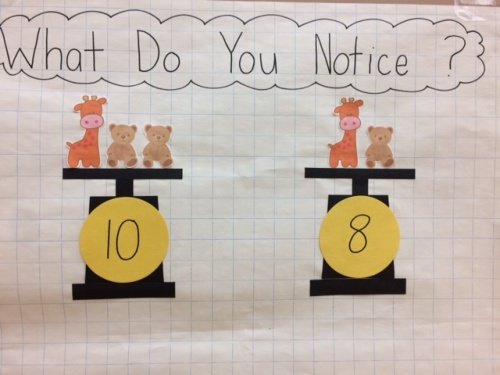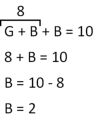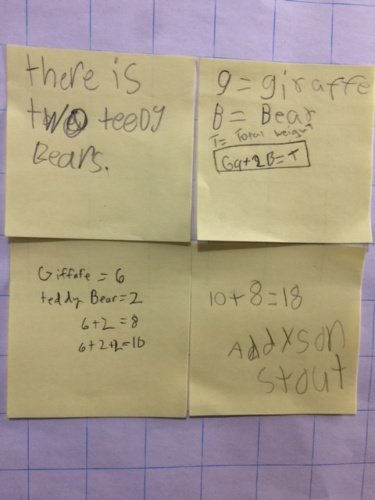
Primary students (K-2): counting, number recognition, comparing, addition/subtraction, logic/reasoning skills, geometric shapes
Intermediate students (3-5): logic/reasoning skills, addition/subtraction, beginning algebra
This scale weight problem is a fun way to introduce algebraic thinking. Although for the young students, simply recognizing numbers and counting the animals is good enough. They can even describe the geometric shapes used to make the scales.
Some students will probably figure out that there’s a relationship between the two scales and use the guess-and-check strategy to determine the weight of each animal. They may even get a little more organized and realize that since the giraffe and teddy bear together weigh 8, then if they remove the giraffe and one of the teddy bears from the first scale, that would leave 2. Therefore, the teddy bear weighs two. From there they can determine the weight of the giraffe: two teddy bears = 4 so the giraffe must be 6 (10 – 4 = 6).
Older students (most likely with the help of their parents) may replace the animals with algebraic symbols to solve for two unknowns. In this case, we can use ‘G’ for the giraffe and ‘B’ for the bear.
Now we can use the substitution strategy to solve for one of the unknowns:
When students work with two (or more) equations with the same set of unknowns, we call those systems of equations or simultaneous equations.

"There is two teddy bears"
"g=giraffe, B= bear, T=Total weight, 6g + 2B = T (a good attempt at building an algebraic equation)"
"Giraffe=6, Teddy bear=2, 6+2=8, 6+2+2=10"
"10+8=18"